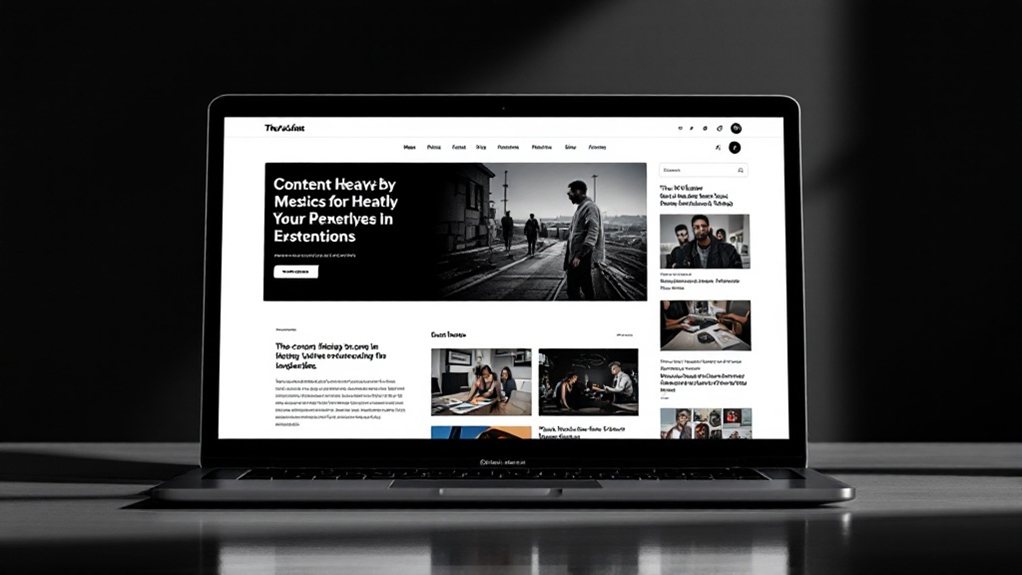To create a personalized UX/UI for your content-heavy media website, you'll need to leverage user data and AI-driven recommendations. This allows you to tailor the interface, content, and features to each individual, enhancing user satisfaction and driving loyalty and revenue. By embracing data-driven personalization, you can foster a more engaging experience that keeps users coming back. Want to learn more about optimizing your media website for personalized experiences?
Key Takeaways
- Leverage user data and preferences to create a personalized content experience, including customized layout, navigation, and AI-driven recommendations.
- Implement adaptive content delivery systems that analyze user behavior and context to serve relevant and engaging content in real-time.
- Optimize for a mobile-first experience with streamlined layout, responsive design, and fast page load times to cater to users' on-the-go content consumption.
- Continuously gather user feedback and iterate on personalization strategies to enhance user satisfaction, drive loyalty, and boost business outcomes.
- Embrace personalization as a strategic imperative, leveraging data-driven insights to create tailored experiences that meet the evolving preferences of content-hungry users.
Understanding the Evolving Media Landscape

The media landscape has undergone a profound transformation in recent years, driven by the meteoric rise of digital platforms and shifting consumer preferences. Audiences now expect personalized, on-demand content delivered seamlessly across multiple devices. Traditional media outlets face increasing competition from nimble digital-native players, who leverage data-driven insights to create tailored experiences. As the battle for user attention intensifies, understanding this evolving landscape is crucial for media websites seeking to deliver exceptional user experiences. By adapting to the changing dynamics, you can create content-heavy platforms that cater to the unique needs and preferences of your audience, ultimately driving engagement and loyalty.
Defining Personalized UX/UI for Media Websites
As the media landscape evolves, defining personalized UX/UI for your content-heavy websites becomes paramount. Personalization means understanding your users' unique preferences, behaviors, and content consumption patterns. It involves tailoring the interface, content, and features to each individual, enhancing their experience and engagement. From intuitive navigation to adaptive layouts, personalized UX/UI ensures your website remains relevant and valuable. Leverage user data, AI-driven recommendations, and dynamic content to create a seamless, user-centric experience. This not only boosts user satisfaction but also drives loyalty and revenue. Embrace personalization as a strategic imperative to thrive in the competitive media industry.
Leveraging User Data and Preferences
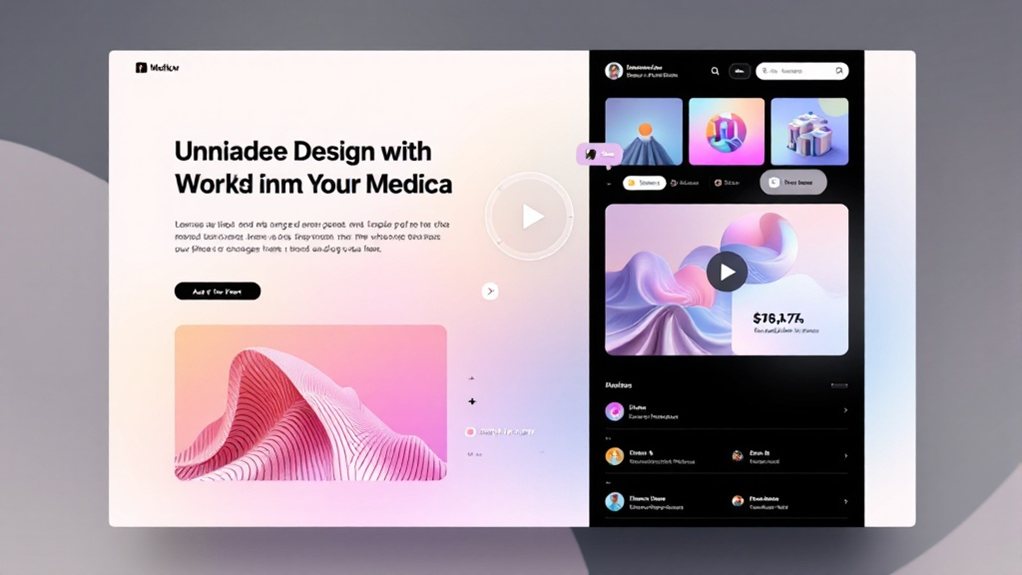
Leveraging user data and preferences is crucial for delivering personalized UX/UI on your content-heavy media website. By understanding your users' browsing habits, content interests, and demographics, you can tailor the experience to their specific needs. Utilize data analytics to identify user segments and create personalized content recommendations, layout, and navigation. Allow users to customize their preferences, such as font size, color schemes, and content categories. Seamlessly integrate these preferences across devices for a consistent experience. Continually gather user feedback and iterate on your personalization strategies to optimize engagement and retention. Embrace the power of data-driven personalization to elevate your users' experience and drive success for your media website.
Adaptive Content Delivery and Recommendation Systems
Adaptive content delivery and recommendation systems can significantly enhance the user experience on your content-heavy media website. They analyze user behavior, preferences, and contextual data to deliver personalized content and make relevant recommendations. This helps users discover new content they're likely to engage with, increasing site usage and loyalty. By leveraging machine learning algorithms, these systems can continuously improve their recommendations, adapting to user interests over time. Implementing a comprehensive adaptive content strategy can foster a more engaging, tailored experience, setting your website apart from competitors. Ultimately, these systems empower you to provide a personalized UX that resonates with your audience and boosts your overall business outcomes.
Optimizing for Mobile-First Experiences

In the age of mobile-dominant user behavior, optimizing your content-heavy media website for mobile-first experiences is paramount. Streamline your layout and navigation, ensuring intuitive interaction on smaller screens. Leverage responsive design to deliver content adaptively, adjusting to device capabilities. Prioritize page speed and minimize loading times – mobile users expect snappy performance. Optimize images and multimedia for mobile consumption, balancing quality and file size. Simplify forms and checkout processes, eliminating friction. Integrate seamless cross-device functionality, enabling users to pick up where they left off. Ultimately, a mobile-first approach will enhance engagement, accessibility, and user satisfaction across your content-rich platform.
Enhancing Content Discovery and Engagement
One effective way to enhance content discovery and engagement on your content-heavy media website is to personalize the user experience. By leveraging user data and behavior analytics, you can create a custom content recommendation engine that suggests relevant articles, videos, or podcasts based on each visitor's interests and preferences. Incorporating personalized content carousels, featured sections, and search algorithms can make it easier for users to find the content they're most likely to engage with. Additionally, providing users with the ability to curate their own content feeds and save favorite items can further boost engagement and encourage repeat visits. Ultimately, a personalized UX/UI empowers your audience to discover more of your valuable content.
Personalized Navigation and Site Structure
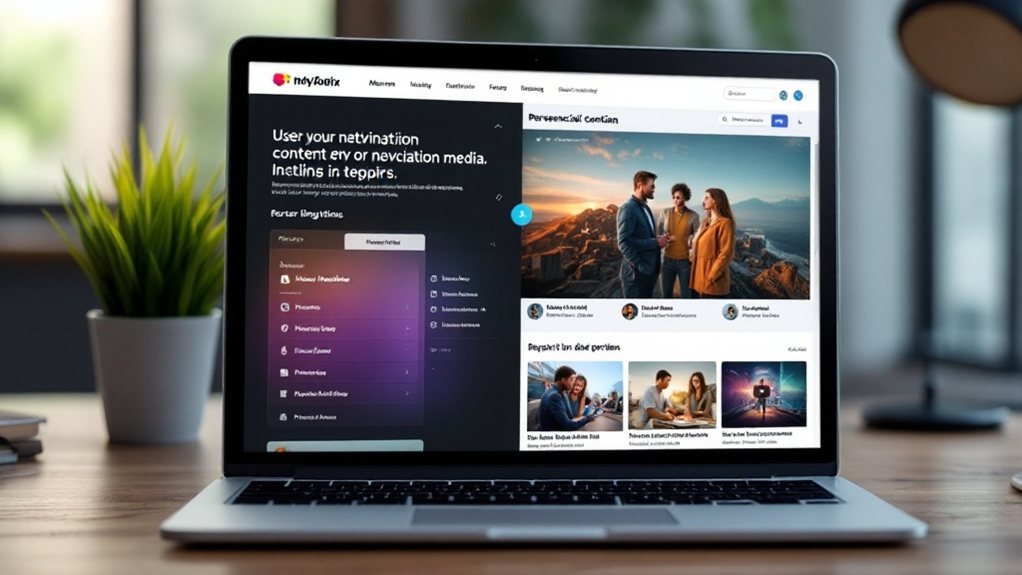
While a personalized content discovery experience is crucial, it's equally important to tailor your website's navigation and overall structure to each user's preferences. By leveraging user data and behavior patterns, you can create a dynamic site architecture that aligns with individual needs. This might involve customizing menus, highlighting relevant sections, and streamlining pathways to popular content. Ultimately, a personalized navigation system enhances usability, reduces frustration, and encourages deeper engagement. Users will appreciate the seamless, intuitive experience, leading to increased loyalty and, potentially, higher conversion rates. Implementing this level of personalization requires careful analysis and continuous optimization, but the benefits far outweigh the investment.
Incorporating Interactive Elements
Beyond personalized navigation, content-heavy media websites can further enhance user experience by incorporating interactive elements. These can include scrolling animations, quizzes, polls, and multimedia content that engage users and keep them immersed in the experience. Interactive elements not only make the website more visually appealing but also foster active participation, increasing user retention and time spent on the site. Thoughtfully designed interactive features can complement the personalized navigation, creating a cohesive and engaging user journey. By blending personalization and interactivity, content-heavy media websites can deliver a tailored experience that meets the evolving needs and preferences of their audience.
Optimizing for Accessibility and Inclusivity
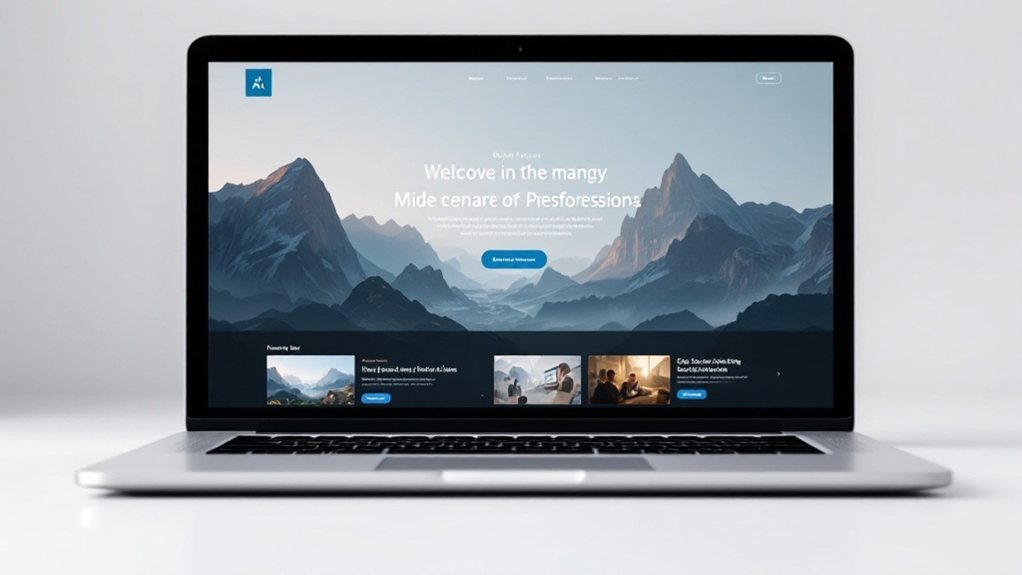
Ensuring your content-heavy media website is accessible and inclusive should be a top priority. Optimize your site for users with disabilities by providing alt-text for images, closed captions for videos, and screen reader compatibility. Adopt a mobile-first design approach to accommodate diverse device usage. Utilize clear, concise language and avoid jargon to cater to a wide audience. Offer multiple content formats, such as audio and video, to engage diverse learners. Regularly audit your site for compliance with Web Content Accessibility Guidelines (WCAG). Solicit feedback from users with disabilities to continuously improve the experience. By prioritizing accessibility and inclusivity, you'll deliver a personalized UX/UI that resonates with all your users.
Testing and Iterating on Personalized UX/UI
Crafting a personalized UX/UI for your content-heavy media website doesn't end with accessibility and inclusivity. The true test lies in how users respond to your personalized approach. Continuously test and iterate on your UX/UI, gathering valuable feedback that informs your next steps. Leverage A/B testing to compare different personalization strategies and determine what resonates best with your audience. Analyze user behavior data to identify pain points and opportunities for improvement. Don't be afraid to experiment – try new layouts, navigation structures, and content recommendations. By staying agile and responsive to user needs, you'll cultivate a truly personalized experience that keeps your audience engaged and coming back.
Integrating Personalized Ux/Ui With Business Goals
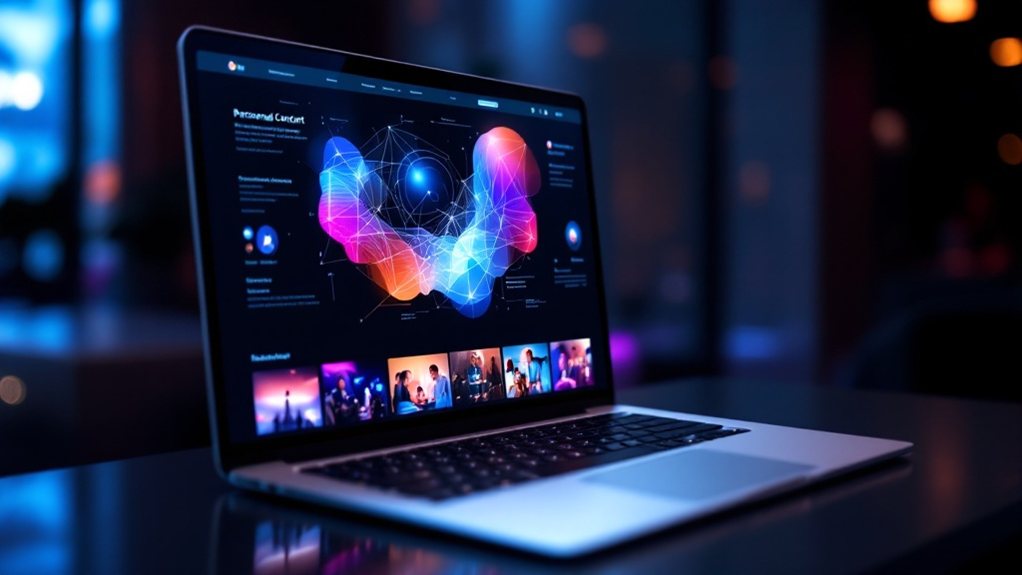
As you refine your personalized UX/UI, it's crucial to align it with your overarching business goals. Ensure the personalized experience seamlessly integrates with your monetization strategies, whether that's driving subscriptions, increasing ad revenue, or boosting e-commerce sales. Analyze user data to identify high-value segments and tailor the experience accordingly. Experiment with personalized content recommendations, targeted offers, and customized layouts to optimize for your desired outcomes. Remember, a personalized UX/UI is not an end in itself, but a means to better serve your audience and achieve your business objectives. Continuously evaluate the impact and make adjustments to strike the right balance between user delight and commercial success.
Ensuring Data Privacy and Security
When handling user data for personalized UX/UI, you must prioritize data privacy and security. Collect only the necessary data, and be transparent about how it'll be used. Implement robust encryption and access controls to safeguard sensitive information. Regularly audit your systems, address vulnerabilities, and comply with relevant data protection regulations. Empower users by offering granular control over their data and privacy preferences. Earn their trust by respecting their choices and never misusing their information. Personalization enhances the user experience, but it mustn't come at the cost of privacy. Balance these two critical elements to create a truly compelling and trustworthy digital environment.
Measuring the Impact of Personalized UX/UI

Measuring the impact of personalized UX/UI is key to ensuring your content-heavy media website remains engaging and effective. By closely tracking user behavior, you can identify which personalization elements resonate most with your audience. Look at metrics like time on page, bounce rate, and conversion rates to gauge how personalized content and features influence user interactions. A/B testing allows you to experiment with different personalization approaches and measure their relative impact. Regularly reviewing this data empowers you to continuously refine your personalized UX/UI, optimizing for maximum user satisfaction and business outcomes. Don't rely on guesswork – let the data guide your personalization strategy.

